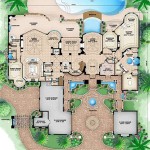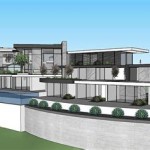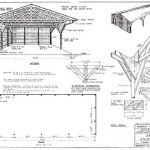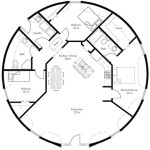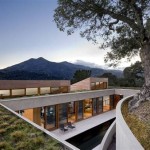House Plans: Exploring the Advantages and Design Considerations of L-Shaped Homes
L-shaped house plans have consistently remained a popular design choice for homeowners due to their versatility and ability to maximize space and privacy. Characterized by two wings that intersect at a right angle, these designs offer a unique layout that can be adapted to a variety of lot sizes and orientations. This article will explore the core benefits and design considerations associated with L-shaped house plans, providing a comprehensive understanding of their appeal.
Maximizing Space and Creating Distinct Zones
One of the primary advantages of the L-shaped house plan lies in its efficient use of space. The distinct wings naturally create separate zones within the home, allowing for a clear division between living areas, bedrooms, and potentially even home office spaces. This zoning is particularly beneficial for families who desire defined areas for different activities, promoting both individual privacy and shared family time.
For instance, one wing of the “L” might house the bedrooms and bathrooms, providing a quiet and private retreat. The other wing could encompass the living room, dining area, and kitchen, creating a more open and social space. This segregation can minimize noise transfer and visual distractions, contributing to a more comfortable living environment.
Furthermore, the L-shape design often allows for a more generous outdoor space. The configuration naturally creates a courtyard or patio area in the angle formed by the two wings. This outdoor space can be utilized as a private garden, an entertainment area, or simply a tranquil spot for relaxation, effectively extending the living space beyond the interior walls.
Consider the orientation of the L-shape in relation to the sun's path. By strategically positioning the wings, homeowners can optimize natural light exposure throughout the day. For example, placing the living areas on the east side of the "L" allows for morning sunlight, while the bedrooms on the west side can benefit from the warmer afternoon light, provided appropriate shading is implemented to avoid excessive heat gain.
The shape itself lends to the creation of unique interior spaces. The corner where the two wings meet can be used to create a dramatic focal point, such as a grand entryway, a curved staircase, or a large, open living area with expansive windows that offer panoramic views of the surrounding landscape.
In smaller lots, the L-shape can be adapted to maximize the buildable area while still providing a sense of spaciousness and defined zones. By strategically angling the wings, homeowners can create the illusion of a larger interior and make the most of the available outdoor space.
Enhancing Privacy and Security
The L-shaped design inherently contributes to enhanced privacy and security. The configuration can be used to shield certain areas of the home from street view or neighboring properties. By strategically positioning the wings, it is possible to create a more secluded and private living environment.
The courtyard or patio area created within the "L" can be easily enclosed with fencing or landscaping, further enhancing privacy and creating a secure outdoor space for children or pets to play. This enclosed area also provides a sense of enclosure and protection from external elements.
The layout of the L-shape can also be used to create a natural barrier between the public and private zones of the home. For example, the wing containing the bedrooms can be positioned away from the street, minimizing noise and visual intrusion. Similarly, the entrance to the home can be strategically placed to control access and maintain privacy within the living areas.
Furthermore, the L-shape can be adapted to incorporate security features such as strategically placed windows for visual surveillance and reinforced doors and windows for added protection. The distinct wings of the "L" can also be designed to incorporate separate alarm zones, providing an added layer of security.
Consider the accessibility of the different wings of the house. By carefully planning the layout, it is possible to create a design that minimizes the number of entry points, making it more difficult for unauthorized individuals to gain access to the home. The use of security lighting and motion sensors can further enhance the overall security of the property.
The inherent privacy afforded by the L-shape design can also be a significant selling point for potential homebuyers, particularly in densely populated areas where privacy is highly valued. The ability to create a secluded and secure living environment is a major advantage of this design style.
Adapting to Various Lot Shapes and Orientations
One of the most compelling reasons for choosing an L-shaped house plan is its adaptability to various lot shapes and orientations. Unlike rectangular or square designs, the L-shape can be easily modified to accommodate irregular lot boundaries and maximize the use of available space.
On a corner lot, the L-shape can be oriented to create a strong street presence while still maintaining privacy within the interior spaces. The two wings can be positioned to shield the courtyard or patio from traffic noise and visual clutter, creating a tranquil outdoor retreat.
For narrow lots, the L-shape can be elongated to maximize the building footprint while still providing distinct living zones and outdoor space. The wings can be designed to wrap around the perimeter of the property, creating a sense of enclosure and privacy.
On sloping lots, the L-shape can be adapted to take advantage of the natural terrain. The wings can be stepped to follow the contours of the land, creating a visually interesting and architecturally unique design. This approach can also minimize excavation costs and reduce the impact on the environment.
Consider the prevailing winds and solar orientation when designing an L-shaped house plan. By strategically positioning the wings, it is possible to maximize natural ventilation and minimize energy consumption. The shape can be used to create shaded outdoor areas in the summer and to capture solar heat in the winter.
The flexibility of the L-shape also allows for future expansion. The wings can be easily extended to accommodate growing families or changing lifestyle needs. This adaptability makes the L-shaped house plan a practical and sustainable design choice.
When selecting an L-shaped house plan, it is important to consult with an architect or builder who has experience with this design style. They can provide valuable insights into the best way to adapt the design to the specific characteristics of the lot and the homeowner's individual needs and preferences.
The ability of the L-shape to seamlessly integrate with the surrounding environment is another significant advantage. The design can be adapted to complement the existing landscape and architectural style of the neighborhood, creating a cohesive and harmonious living environment.
The L-shape house plan offers several compelling advantages, including efficient space utilization, enhanced privacy, and adaptability to various lot shapes and orientations. By carefully considering the design considerations outlined in this article, homeowners can create a functional, comfortable, and aesthetically pleasing living environment that meets their specific needs and lifestyle.

Best Of L Shaped Ranch House Plans New Home Design

L Shaped House Plan 3 Bedroom Design For Narrow Lots

L Shaped House Plans Modern 2024

Why An L Shaped House Plan Makes The Best Home Design Monster Plans Blog

L Shaped House Plans With Side Garages Blog Eplans Com

L Shaped House Plans With Side Garages Blog Eplans Com

9 L Shape House Plans Ideas Shaped

L Shaped House Plan With Upstairs Family Room Kitchenette And Home Office 777053mtl Architectural Designs Plans

L Shaped Home Courtyard Villa Resort Style House Plan Room

53 Best L Shaped House Plans Ideas



